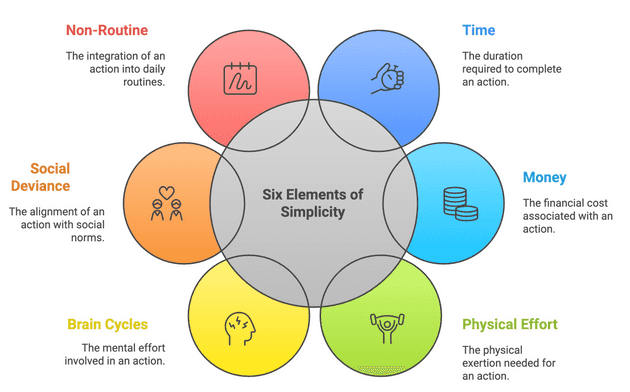Six elements of simplicity to make a habit easier to form: Time, Money, Physical Effort, Brain Cycles, Social Deviance, and Non-routine.
Last week, we learned about the hook model and its related Fogg Behavior Model. In the Fogg Behavior Model, Fogg explains that behavior happens when three elements converge: motivation, ability, and prompt (MAP).
Fogg further breaks down the ability component into "six elements of simplicity" that influence how easy or difficult it is to perform a behavior.
- Time: How long it takes to complete an action.
- Money: How much money it costs to complete an action.
- Physical effort: How much physical effort is required to complete an action.
- Brain cycles: How much mental effort is required to complete an action.
- Social deviance: How much the behavior aligns with social norms.
- Non-routine: How well the behavior fits into existing routines.
 Essentially, the more time, money, physical effort, mental effort, or social deviance required to complete an action or the less it conforms with societal expectations or existing routines, the more difficult it is.
Essentially, the more time, money, physical effort, mental effort, or social deviance required to complete an action or the less it conforms with societal expectations or existing routines, the more difficult it is.
Fogg also emphasizes that the simplicity is determined by the scarcest resource at the moment. For instance, if time is limited, even a task requiring minimal money and effort may be perceived as difficult. Therefore, you must consider all the elements of simplicity and their interrelationship when designing a behavior.